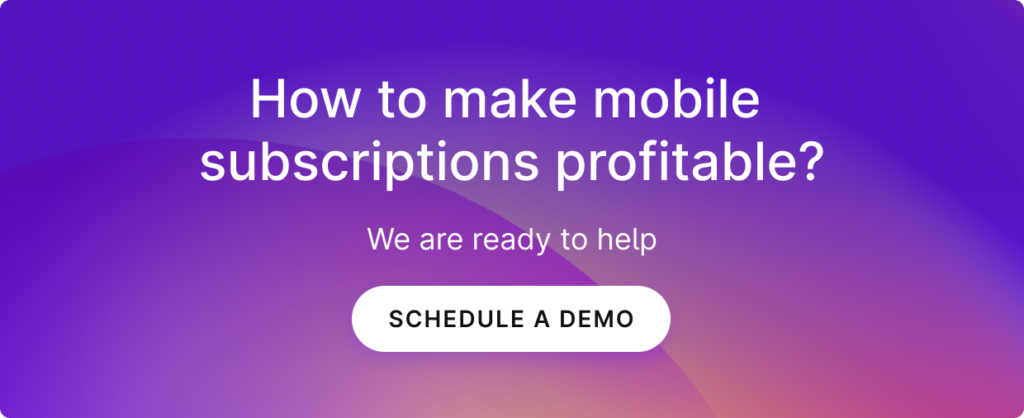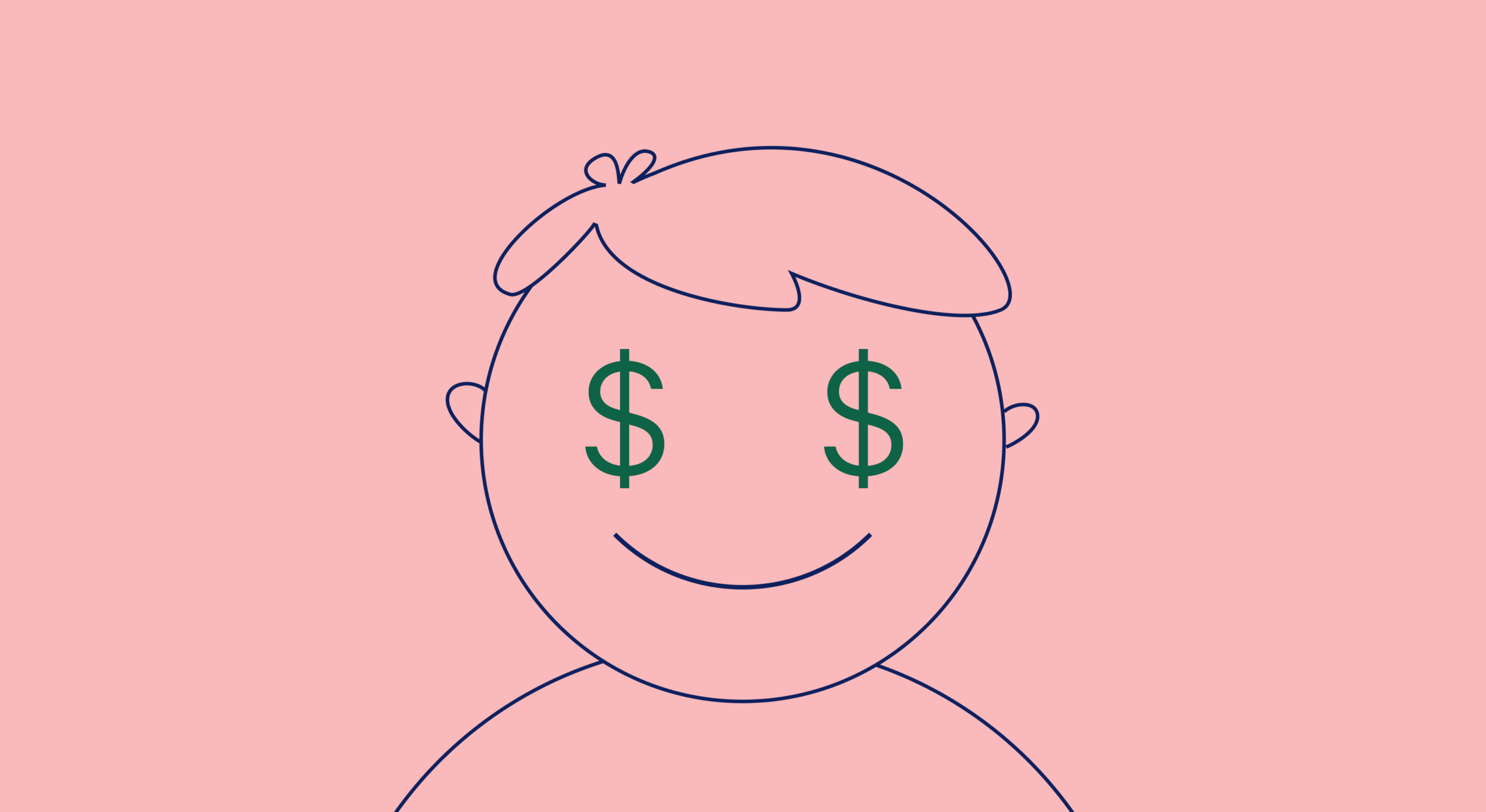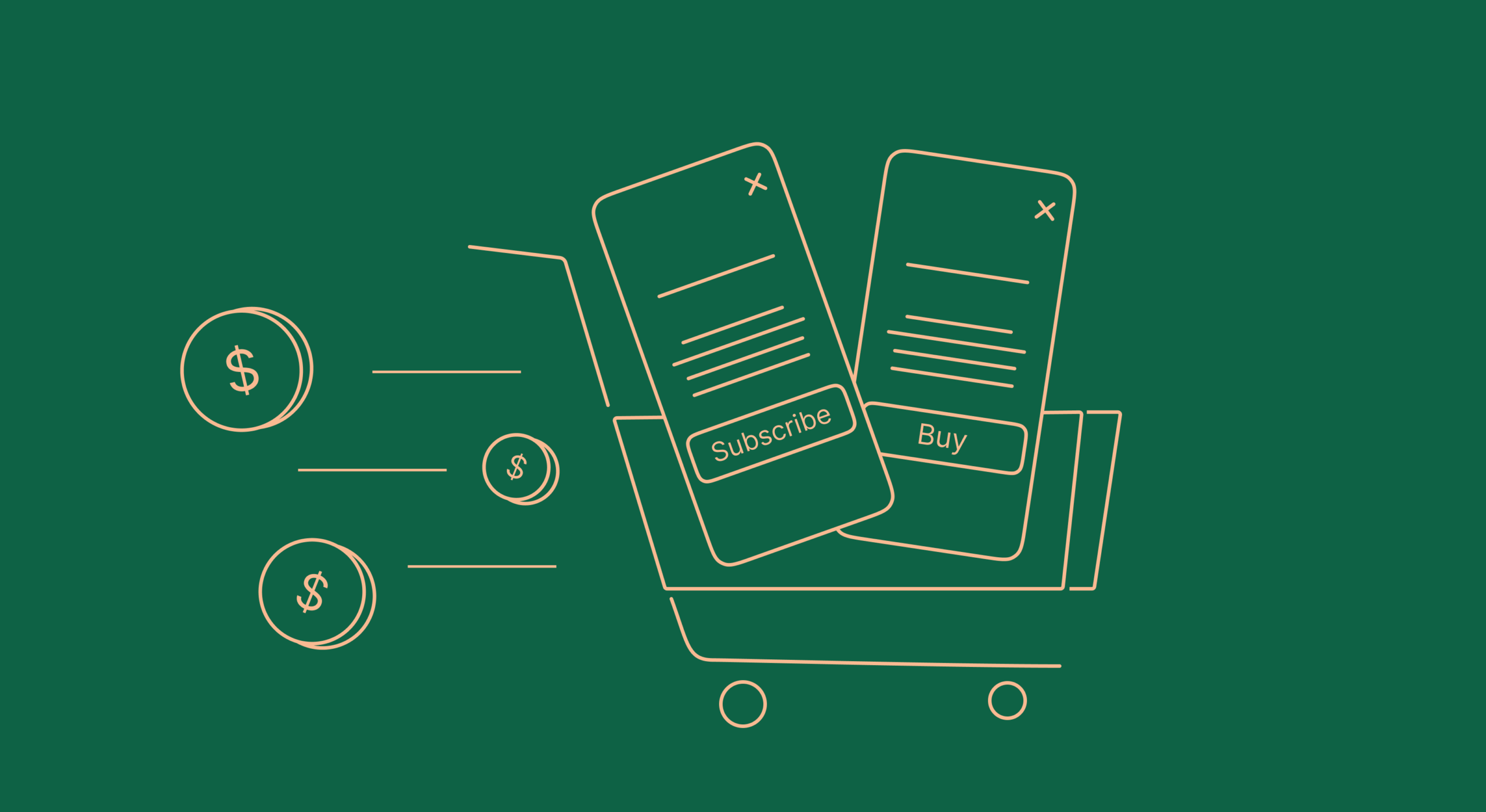Gone are the days when developers or “those computer guys”, as your distant relatives would call people like you, were rolling in dough. With the cost of living growing and the salaries stagnating, the “repay the mortgage in 10 years” type of income turned into a “barely get by and set 5% aside” type of income. This calls for some adjustments to your daily lifestyle and workload, like freelance or a side activity.
There’s no shame in hustling, especially when you can pick up some new skills along the way. We decided to go through some (not always) quick and sure ways to generate some extra income for developers, without going completely left field. The first batch of ideas is about introducing new monetization opportunities to your app, given you wield enough power to implement them. The second list of ideas is dedicated to you as a public professional, and these can also raise your profile in the industry, ensuring you have higher wages along the way. Let’s get started.
Supercharge your app
Nothing speaks better for you than your app. If it works seamlessly and generates profit, you’re guaranteed to have a stable job. However, sometimes stable is not enough.
While in some companies product managers and growth hackers are in charge of the new features, developers are the ones who actually create the app, and they can bring some new ideas to the table. Here, let’s see how you can improve the profitability of your app, and maybe even collect some ideas about your own future endeavor.
In-app Ads
In-app advertising allows developers to embed commercial content within their applications. When users engage with these ads — whether by viewing, clicking, or completing a specific action — the developer earns revenue.
There are several types of ads:
- banners are the most well-known format that has come directly from the Web. The average eCPM for this format in the United States is $0.53 – as in, for every 1000 ad impressions among American users, you can earn up to half a dollar;
- interstitials are full-screen banners that usually appear between game levels. With this format, you can earn up to $4–5 per 1000 impressions;
- video ads are self-explanatory and usually bring around $6–7 per 1000 impressions;
- playable ads are essentially interactive demo versions of the app. These usually have the highest conversion rate, since they allow a user to experience the game before downloading it, and pay accordingly, with an eCPM of up to $15 in the US.
Platforms like Google AdMob or Facebook Audience Network simplify the process of integrating ads. The key here is to balance ad frequency and placement, ensuring it doesn’t impede the user experience.
In-app Purchases
Integrating in-app purchases allows users to buy specific items, features, or content directly within the app. For instance, in games, this could be power-ups, virtual currency, or new levels. In non-gaming apps, this could mean unlocking additional functionalities or features. The key to maximizing revenue through in-app purchases is by offering items that enhance the user’s experience or provide tangible value, making them more inclined to make the purchase.
You can integrate IAPs into their apps using the platform’s SDK, Software Development Kit. Both iOS and Android have their respective systems: Apple uses the StoreKit framework for IAPs on iOS, while Android utilizes the Google Play In-app Billing API.
The two main types of in-app purchases are consumables and non-consumables. Consumables are items that users purchase and then use within the app, like game currency, power-ups, or extra lives. Once consumed, they can be bought again. Non-consumables, on the other hand, are one-time purchases that unlock features or content permanently, such as removing ads or accessing a full version of the app.
The average IAP prices and revenue vary greatly, both by the kind of virtual goods you offer and the country the users find themselves in. Apple offers up to 800 pricing options by default, allowing you to find the ideal cost/value combo. When calculating the business plan, keep in mind that both Apple and Google take a 30% commission off all your revenue.
Affiliate Marketing & Sponsorships
Affiliate marketing is, at its core, promoting third-party products or services in your app. When a user makes a purchase or signs up through a referral link, you get a certain payment: either a fixed fee (CPA, cost per action) or a percentage off the purchase. This method is particularly effective for apps that naturally align with other products or services, or for services that often lead users to other e-comm players.
To successfully implement this, it’s important to choose relevant affiliates that resonate with their user base. The integration should be seamless and not feel forced; otherwise, it can hamper the user experience. A well-placed product or service that adds genuine value to the user can result in higher conversion rates. For example, a fashion recommendation app might include affiliate links to clothing stores, or a book review app could link to online bookstores.
As with any ad activity, it’s important to be transparent. Users should be aware that they’re clicking on affiliate links that the developer stands to gain from. It won’t necessarily hurt your income: if anything, loyal customers would be glad to support their favorite app or app studio at no expense of their own.
Subscription Model
A subscription model is especially viable for apps that offer continuous services or content updates. Instead of a one-time payment, users are charged periodically (monthly, quarterly, or yearly) and regularly to access the app’s content or services. With these recurring payments, you can be sure of a consistent and predictable revenue stream.
To make the subscription model happen, you need to be certain that you provide ongoing value to the users, whether that’s through regular content updates, additional features, or superior service quality. While your users might not open your app daily, they reconsider the decision to support you financially every time they’re charged. Be sure that subscribers see the worth of renewing their subscription.
The next step is to render your app successful in converting to paying users. Here’s where Adapty comes into play: with our dedicated tools like No-Code Paywall Builder, Cohort Analysis, and Price A/B Testing, you have all the instruments necessary to finetune your subscription offers and keep experimenting to find the best price/value combo with little-to-no coding hustle.
Adapty can be integrated with almost all popular ad platforms, IAPs SDKs, and analytics services. Easily implementable, Adapty can help you run and adjust subscriptions in less than a day. Check out our introductory offer below:

Promote yourself
Of course, you might now always have complete control over the app you’re working on. However, only you are in charge of what you do and how you choose to monetize your knowledge. This especially comes in handy if you plan to become a public speaker lead a team of developers in the future – and, of course, make some money along the way.
With more AI-powered low-code tools taking over junior positions, and completely remote teams of foreign developers taking over the middle ones, developers also need to make a name for themselves to keep their senior status. The ideas below are meant to generate some revenue, yes – but they also make sure you have a Google-able profile going forward.
Freelancing online
Even though it’s the most obvious option, people often look over it thinking that building a successful freelance career takes too much time and resources. However, if approached strategically, you can start making some money relatively quickly. These are the first steps:
- Register on freelance platforms such as Upwork, Freelancer, Toptal, and Gigster. These sites have a plethora of job postings catering to various tech skills.
- Determine your niche. Instead of being a generalist, you can specialize in certain areas like full-stack development, SwiftUI expertise, AI, or blockchain.
- Set competitive rates. Initially, you might start with lower rates to build a client base and garner reviews. As your portfolio and reputation grow, you can raise your rates.
- Build a strong stack. A portfolio showcases your skills and past projects. It’s essential to have a personal website or a GitHub account where potential clients can see your work, testimonials, and skills.
- Set clear contracts. This protects you from scope creep, and payment issues, and ensures both parties have a clear understanding of deliverables and terms.
Of course, freelancing requires balancing technical skills with entrepreneurial ones, like time management and communication. If your side activities interfere with your full-time job, see that you make enough money to go fully independent before diving into time-consuming projects.
LinkedIn Influencing
LinkedIn might not be the go-to platform for developers, but this is where the HR managers and the team leads are. So being active there also gives you a chance of catching your future employee’s attention.
For a developer, being a LinkedIn influencer means establishing oneself as a thought leader, gaining visibility, and creating opportunities for monetization. The most obvious way to do this is to regularly post articles, tutorials, and insights related to technology, programming languages, and industry trends. Is it cringe? Yes. Does it work? Yes.
Engaging actively with the community by commenting on, liking, and sharing posts from industry peers can increase your visibility. This recognition can pave the way for offering paid consultation sessions, where businesses and individuals seek advice and insights – we discuss this option later in the article. Additionally, you can organize and promote webinars, workshops, or online courses, leveraging the credibility established on the platform. Of course, all of this is quite time-consuming, so you need to make sure you charge enough to cover your monthly needs.
With influence comes the opportunity to partner with tech companies, startups, or software vendors for paid promotions, software reviews, or brand ambassador roles. Beyond LinkedIn, this visibility can translate into invitations for paid speaking engagements at conferences or workshops, as well as being asked to judge hackathons or mentoring. More on this later.
Creating online courses
Remember how you became a developer? Did you read a book in the library or get a degree from a state university? Nope. Chances are you got into developing by studying online from various short courses, copy-pastying pieces of code from GitHib, and random ad hoc YouTube videos. And now’s your chance to pass the torch!
Creating online courses gives you a powerful opportunity to capitalize on your expertise and the general demand for tech education. Start by identifying a niche or topic within your domain or daily job that is highly requested but possibly underserved. This could be anything from the programming language you’re using to a specific development framework or tool. You won’t be the first, but the unique combo of your experience and the cases you choose to dissect might be the perfect solution to a lot of people.
Next, it’s essential to design a study plan that covers all the necessary topics and caters to the level of your audience, whether they’re beginners, intermediates, or advanced learners. Investing in recording equipment like a good mic and a screen capturer can help in producing high-quality videos and tutorials. Showing your face isn’t necessary — for most specific programming juggernauts, just showing the code and explaining what you’re doing with your voice (or even AI!) is often enough.
Once the series of videos is packed into a course and ready, you can host it on platforms like Udemy, Coursera, or Skillshare. You set the price for the course, and can usually earn up to $20 per user. Alternatively, you can upload the videos on YouTube: this will ensure higher reach, but somewhat lower ad-generated revenue of around $4 dollars per 1000 video views.
Becoming an online mentor
Similar to offering online courses, being an online mentor gives you a chance to monetize your expertise and experience. You also get bonus points for helping the community and can even potentially collect strong players to your team.
You can start by setting up a personal website or joining platforms dedicated to mentorship, showcasing your skills, achievements, and areas of specialization. Even better, you can add an option to sign up for your mentoring in your online videos or LinkedIn presence, combining the best of both wide and personal communication. By offering one-on-one coaching sessions, you can guide budding developers through coding challenges, career decisions, or skill development.
You can also organize regular webinars or group classes to address common topics or industry trends. Charging fees for these sessions, workshops, or long-term mentorship programs can lead to substantial earnings. Also, networking and collecting testimonials from satisfied mentees can enhance credibility, attracting more students. To save time and resources, you can record your mentoring sessions and later upload them online, collecting the additional ad revenue.
Contributing to open-source communities
Contributing to open-source communities might not offer direct financial rewards straight away, but it can lead to lucrative opportunities for developers.
When you actively contribute to projects by posting solutions to pesky problems or commenting on and supporting others’ activity, you gain visibility and build a reputation in the community. This reputation can catch the attention of companies looking to hire professionals familiar with particular open-source tools or frameworks. Some companies also offer “bug bounties” to developers who identify and fix critical vulnerabilities in their open-source projects.
By demonstrating expertise, you might attract some potential employers to approach you for specialized consulting, training, or integration services related to that open-source tool. And when it comes to some extra cash in hand, active contributors often get regular or one-off donations via platforms like GitHub Sponsors or Patreon. While not exactly predictable, the ‘tips’ can amount to a pleasant sum after a couple of months of active work.
Participation in coding challenges
Trying out your skills in coding challenges not only lets you sharpen your sword, but also offers several avenues to earn money. Many platforms and companies organize coding competitions with cash prizes for top performers. By winning or ranking high in these contests, developers can earn substantial amounts. Additionally, companies often use these challenges as recruitment tools, scouting for talent. Excelling in them can lead to job offers with competitive salaries.
Moreover, consistently performing well in challenges enhances your developer’s profile, making you attractive for freelance projects or consultation roles. In some cases, challenges tied to real-world problems can result in the creation of profitable startups or solutions, implemetable in your product as well. Lastly, after gaining some experience, you can monetize your expertise by coaching others to succeed in these competitions.
Conclusion
Making more money is always exciting, and these days there are plenty of ways to do so. Don’t just stick to coding; explore new tools like Adapty and think about teaching or freelancing. The developing world is still on the rise, and while the competition is stiff, there’s still a piece of the pie for everyone. Remember, it’s all about understanding what users want and how best to reach them. So, keep learning, stay curious, and have fun with it.




